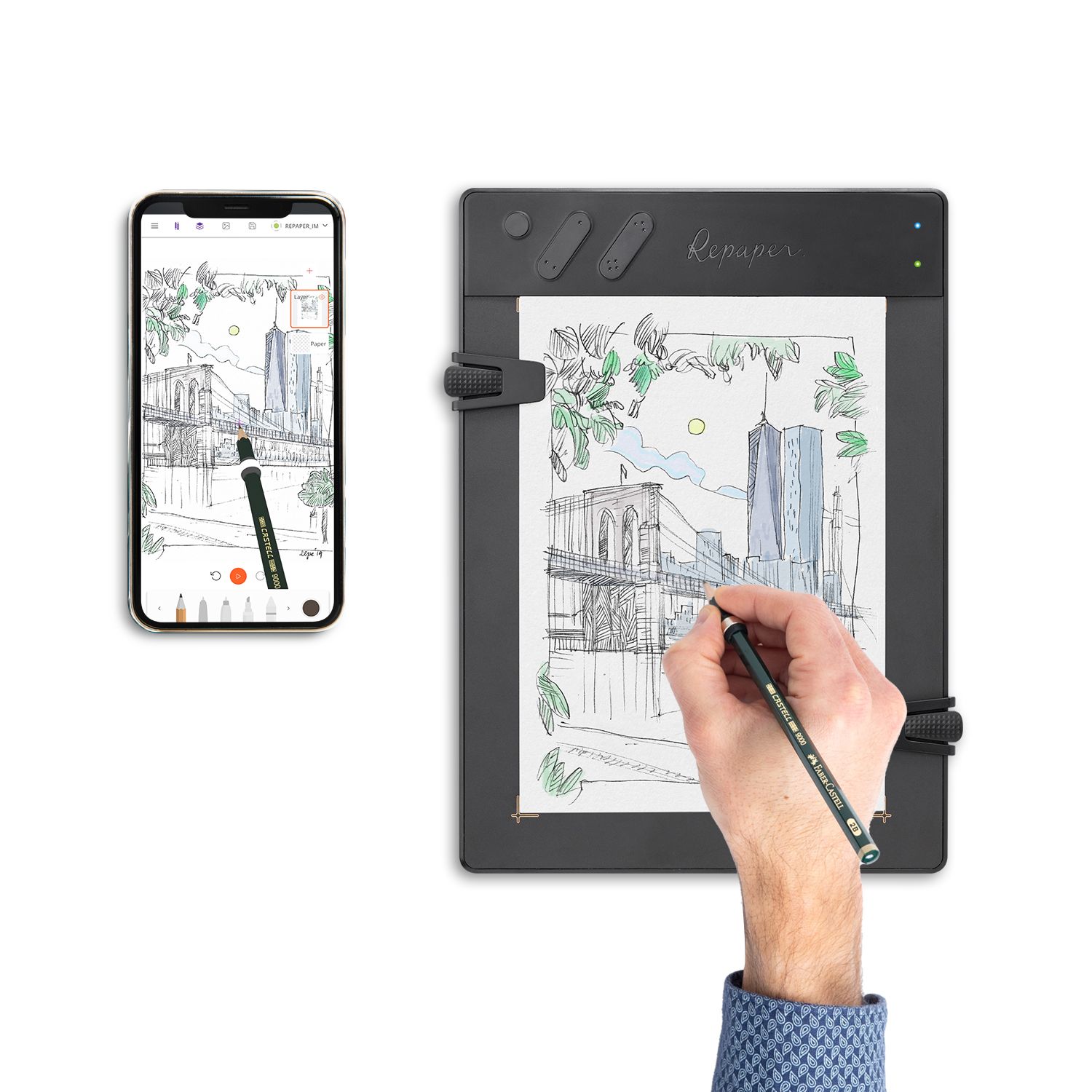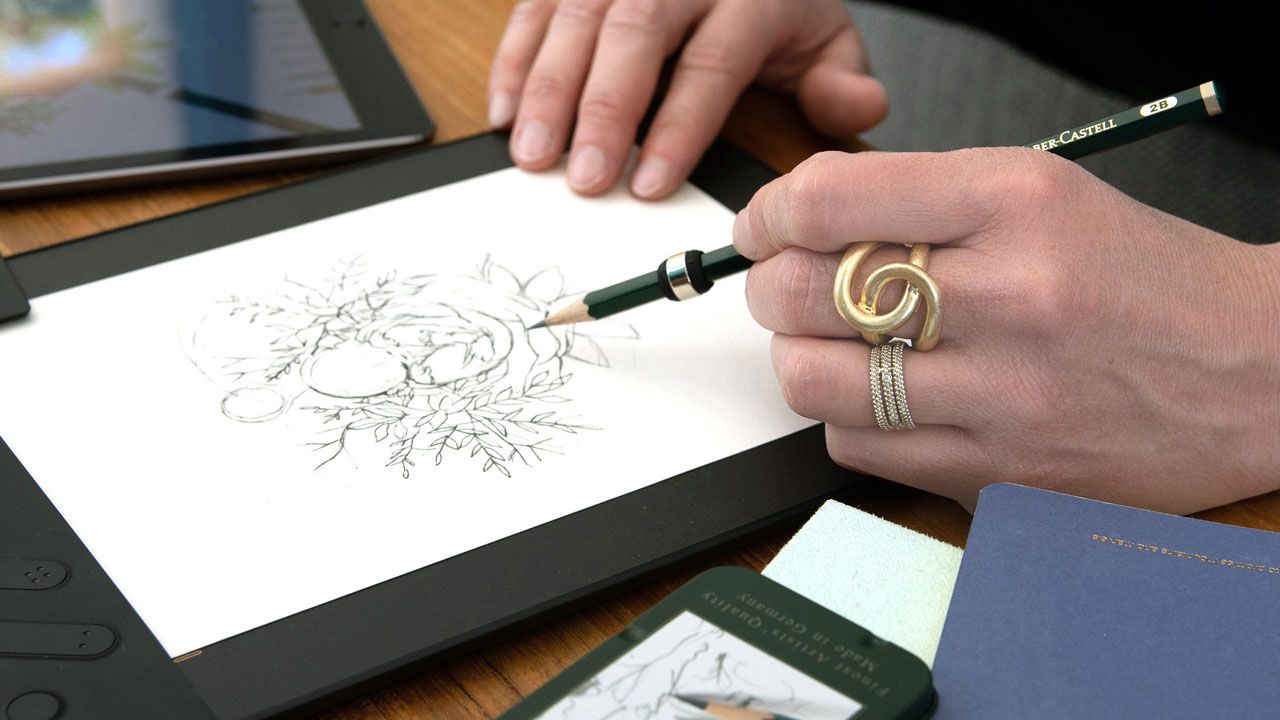
How to become an illustrator?
Working in the field of illustration is a dream for many enthusiasts. If the artistic part found in the job of a comic book or manga artist, or the illustration, are the first thing you think of when you talk about making drawing your job, there are many choices you can make for your career. From education to the different possible specializations, to the tools you need to master, we give you an overview of the possibilities that are available to you to make your passion your business.
Drawing is a job for enthusiasts.
Practice and take classes.
As with any artistic career or passion in general, and despite the drawing talents you may have in an innate way, in order to succeed in the industry, taking drawing classes is essential in order to perfect your basics and learn the techniques that will help you improve your style. While it may be that luck and connections lead to professional success, hard work and training cannot be overlooked. Work on personal sketches, try to broaden your horizons to draw from a variety of drawing techniques to create the one that is uniquely yours. You will be appreciated for your talent and style, and you will be better prepared to work in the drawing world later on.


Know the necessary equipment.
To be a professional illustrator, you must know how to master the different tools that will be available to you during your upcoming career. This is why understanding the technical constraints of each tool, and mastering drawing in all its forms, traditional as well as digital, is a must if you want to make this art your business. One may think that the simple use of pencils and a sketchbook is sufficient to make sketches, but today, computer aided design (CAD) has become preponderant in the industry, and it is necessary to know how to use drawing software to make your sketches. Among the CAD (computer aided design) software, there are many softwares, the most famous of which are those of the Adobe suite, with Photoshop and Illustrator. It is important to master this set of CAD tools, as they are used by a large part of the companies that employ designers. Other softwares are obviously more specialized, and allow the graphic designer to create drawings and illustrations, more in tune with his specialization.

In order to work digitally, these softwares go hand in hand with the use of a graphic tablet. These are essential to work efficiently in digital drawing, and to obtain a fluid line, close to what can be achieved in a traditional paper format. Nevertheless, the graphic tablet does not fully reproduce the sensations of drawing with a pencil, and the hand-eye coordination that it requires, between the computer screen and the operating surface, as well as the use of the pen, and the sensation of the material used on the drawing area, can be disturbing for the beginner or the person who is not accustomed to using this type of tool. However, there are alternatives that allow professional drawings to be made digitally, using the same devices as in traditional drawing. Some graphic tablets, such as the ISKN Repaper, allow this. The draftsman can place a sheet of paper directly on the pressure-sensitive surface of the drawing tablet and work on it with a standard pencil, just as he would do in everyday life. The magnetic ring around your favorite pencil transmits the movement and tilt of the pencil, and keeps the feeling of sketching on paper. This is not only an option that allows self-taught artists to avoid having to relearn everything when switching to digital drawing, but it also saves time for those who particularly enjoy drawing on paper, and who previously had to scan and rework all the contours of their sketches on software.

Do I have to take professional training?
Being a professional illustrator has long been a self-taught career, requiring no specific studies. If this is still the case today for many drawing disciplines, professional baccalaureate and post-baccalaureate training courses now offer you the opportunity to specialize, and allow you to enter the professional world more easily, especially to join companies that regularly ask whether you have professional experience. For high school students wishing to have a career in design, a bac STD2A (sciences and technologies of design and applied arts) allows you to continue working on general disciplines, while developing your artistic culture with specialized modules. Other more specific baccalaureate training courses are also available, including the bac-pro in crafts and art trades, or a CAP (vocational training certificate) in graphic communication, for example. Each student can then turn to specializations by integrating a BTS or a professional license in visual communication, graphic design or design. Finally, apart from specific technical studies, there is the possibility of turning to the École Nationale Supérieure des Beaux-Arts which, during a course of at least 3 years, leads to a DNA (national art diploma), and allows students to be trained on a general panel of drawing techniques. We can still quote numerous trainings and diplomas, like the DNMAD or the DSAA for example, but as we have seen, there is not only one training as a draftsman, and it is even possible to start in the business as a self-taught. It is up to you to make your choice according to the specialization you wish.

What kind of illustrator can I become?
Comic book or Mangaka artist.
If many subsets of crafts are related to the profession of cartoonist, the creation and realization of comics and mangas remains the most representative occupation when one imagines working in the field of drawing. If studies are not necessarily required, the work of a comic book artist requires rigor, creativity and an acute aesthetic sense in order to create a particular universe that may lead scriptwriters to want to work with you. However, the opportunities remain small, and diversifying into different styles is not necessarily the right option to take, as you risk getting lost in the stream of people wanting to enter the very closed circle of comic book illustration.

Illustrator
Like computer graphics designers, illustrators have the mission to emphasize an idea and a text by adding a visual and graphic element. Regularly used in communication, this activity favors pure aesthetics and creation, by creating artworks directly from one' s imagination, while a graphic designer will generally follow a guidelines, sometimes using existing illustrations, in order to optimize a communication material. As for all the illustration disciplines, it is not necessary to follow a specific cursus to become an illustrator. However, it is important to know that there is a good chance that you will be able to work as a freelancer, and for those who do not like freelance work, taking a graphic design course can be beneficial to work as a graphic designer-illustrator within a communication agency.
Press cartoonist
Well known by the general public, press cartoonists illustrate the news every day, often in order to denounce, make people laugh or make a newspaper more attractive with colorful and striking front pages. Cartoons are generally the most common type of press illustration used in newspapers, and while weeklies such as Charlie Hebdo or Le Canard enchaîné are well known for their satirical drawings, many newspapers and periodicals use press illustrations in various styles. Press cartooning requires drawing skills that allow you to work fast, as news is getting faster and faster. Although not necessary, studies in journalism and political science, or in the type of newspaper you wish to draw for, can be a plus in understanding the issues to be portrayed. You can also work as a freelance cartoonist, on the Internet or in print, to combine your passion for information with your passion for drawing.

And many other specialized fields…
Many other fields are open to illustrators who wish to make their art their business. Whether you want to become a draftsman, an architect, make industrial drawings, technical drawings or design products, all these jobs revolve around drawing. However, they require a particular technique and the ability to work with strict specifications. It can then be interesting to follow the appropriate training to master these aspects. A BTS in design, a DUT in civil engineering or training in engineering or architecture can be essential to be able to exercise these activities. Those wishing to remain in pure creation can also turn to more creative jobs, but really specialized, such as digital animation or colorist for example.
Master your art to become a professional illustrator.
If becoming an industrial designer, a construction designer or an architect, among others, requires a technical drawing style specific to the industry, for more artistic jobs such as comic book artist, manga artist or illustrator for example, there are multiple drawing techniques, and drawing talent cannot be something uniform. Therefore, a technical training in drawing can help you to get the basics, and a culture around this craft, but it will not make you a "good drawer" in the eyes of the public or potential clients. In order to become a professional, your drawing style must be your own. It is important to work on your own style, in order to stand out and be noticed by a scriptwriter, a drawing professional, or by anyone who might see your drawings. This is especially true in manga, where comics, or sometimes simplistic, even childish drawings, find an echo all over the world, and are sold in millions of copies. Master your own style to a high degree, and not only will you become more comfortable in your craft, but you will also find it easier to get people interested in your art.

There are many ways to become an illustrator.
Drawing professionally does not end with artistic drawing. Even if it is a possibility, you can also turn to other crafts, in the technical or digital professions, which will bring you other opportunities than the one of comic book or manga artists. It's up to you to find out if your real desire is to tell stories through your art, or to turn to other occupations that can be just as interesting.

Discover more
How to draw caricatures: techniques for creating humorous drawings.
From the history of caricature, to the tricks to make them, discover the specificities of this particular art to draw your most beautiful caricature.
How to create a comic book with a graphics-tablet?
If the Americans have their comics and the Japanese their mangas, when talking about comics, we first think of the great French-Belgian comics
How to create a Manga? Tools, Techniques, and Digital Mastery
Manga has been popularized all over the world through mythical works such as Dragon Ball, One-Piece or Naruto, and many beginners want to learn drawing in order to create their own Japanese comic books.
Newsletter
Keep up to date with iskn news and events
Free standard delivery
for purchase over $80
30-day returns
on all products
Secure payment
with Stripe & PayPal
Pay in 4
with PayPal
Customer service
chat with us


